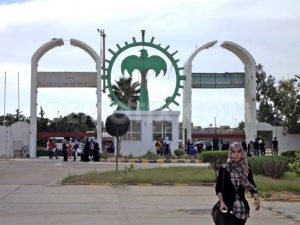1- General introduction:
The idea of the project comes from the importance of providing a database on students,Education system stuff ,school facilities and teachers in the education sector at the level of in the basic and intermediate education (6-17 years) where its represent about 31% of the total population in Libya .
NESDB start implementing a comprehensive survey of the sectors of basic education and
secondary educational institutions in municipalities and in cooperation with the education offices within each municipality, a survey of economic, social, health and environmental aspects, to collect a compilation data and information on educational institutions to know the actual reality of the state of the education sector in the municipalities and the effectiveness and quality educational process, identify the problems and difficulties and the availability of services in educational institutions, which allows decision-makers to take the necessary measures that would address some of the problems and intervention laws and controls to create the appropriate environment for the Future proposed in this area of development projects.
2- Project goals:
– .Conducting a comprehensive survey on the basic and intermediate education sector in the targeted municipalities.
– Provide a database that supports decision-makers in developing future plans for the education sector.
3- Implementing Parties:
– National Council for Economic and Social Development – Bureau of Population Studies and Policies.
– Education Offices in Municipalities – Ministry of Education.
4- Data time period:
Educational year 2015-2016 , 2016-2017
5- Project expected outputs:
– A database on educational institutions in the targeted municipalities includes the following:
The numerical distribution of the population in kindergarten age (03-05 years)
according to provinces and by type (males, female) and explains their social,
economic and health status
The numerical distribution of the population of compulsory education age (06-17 years) according to provinces and by type (males, females) and explains their social,
economic and health status.
Population distribution in compulsory education age (06-17 years) according to
provinces and by gender (males, females).
Numerical distribution of student IDP’s of compulsory school age, by type of
provinces and by sex (males, female) and explains their social, economic and health
status
Numerical distribution of the population of compulsory education age according to
provinces and by type (males, females) who dropout from education.
Knowledge of the density of classrooms according to the basic educational stages
(primary – secondary) by provinces.
Providing information about students who are latecomer’s education, by educational
stage and sex .
Provide information on student employment by sex and by educational stage.
Provide information about repeaters students by sex and by level of education.
Knowledge of the rates of teachers for students and according to educational stages
by classifications of educational staff (Social specialist – Psychologist – Teacher of
special needs – supervisor and health paramedic.)
Assess the needs and interventions required in the social and economic aspects of the students in the educational level according to the results that describe their
social, economic and health conditions (kindergartens, basic education, and
secondary education).
Knowledge of diseases in all their classification in the educational institutions of students (kindergartens – basic education – secondary education) and according to
provinces and it will be easy to propose treatments and services necessary for them.
needs and shortages in school health offices by educational institutions and
provinces.
Knowledge of the distribution of displaced students at the level of educational
institutions and by provinces and thus knowledge of the distribution of their
households geographical and this will facilitate the provision of services necessary
for them.
Assessment of training needs in the educational staff through indicators describing their practical situation.
Assessment of the needs of the educational staff through indicators describing their
social, economic and health status.
Assessment of the needs of educational institutions through indicators showing the
shortage and needs in the educational buildings maintenance and the school
environment.
A Study on the status of education sector within the targeted municipalities

